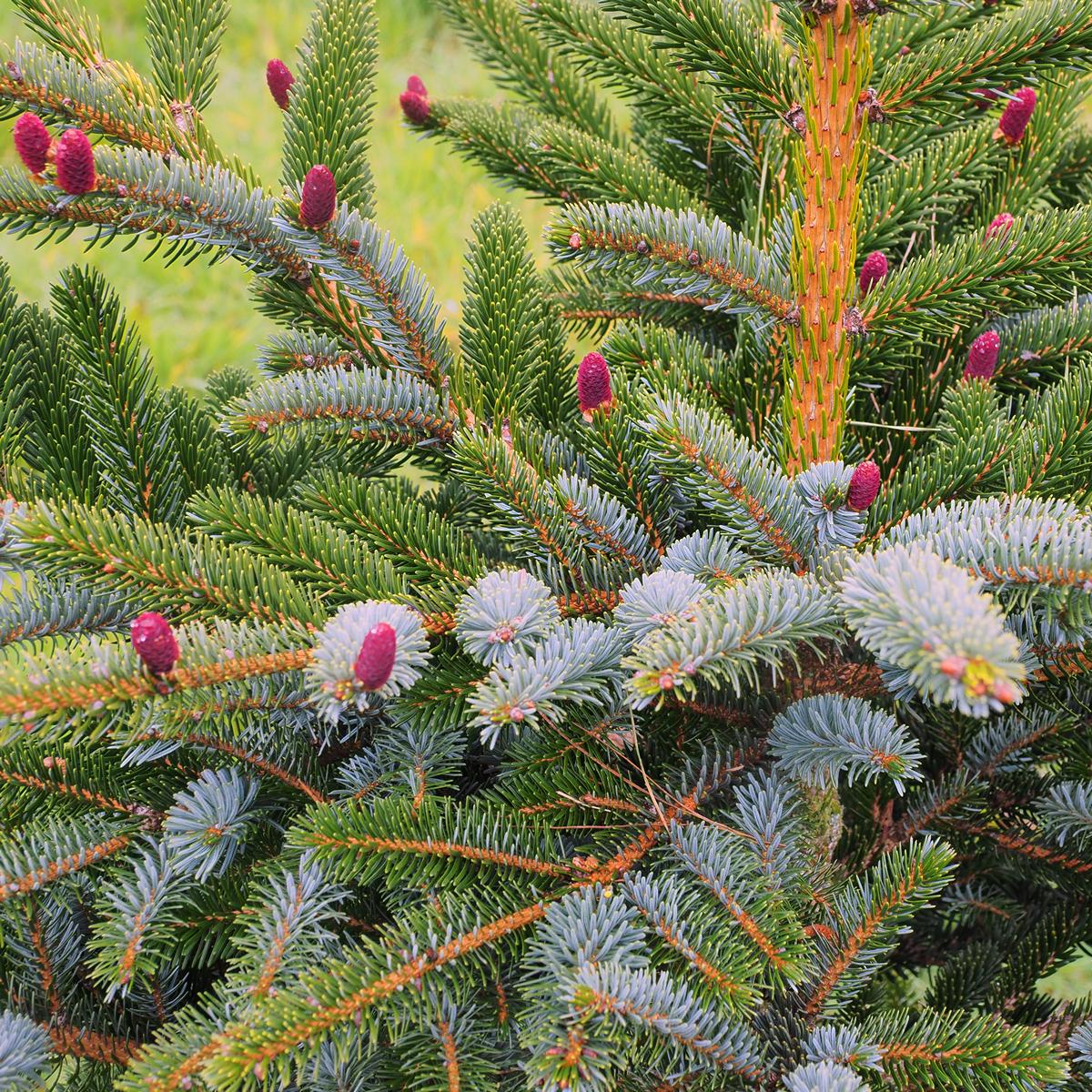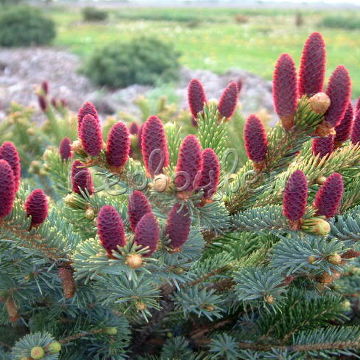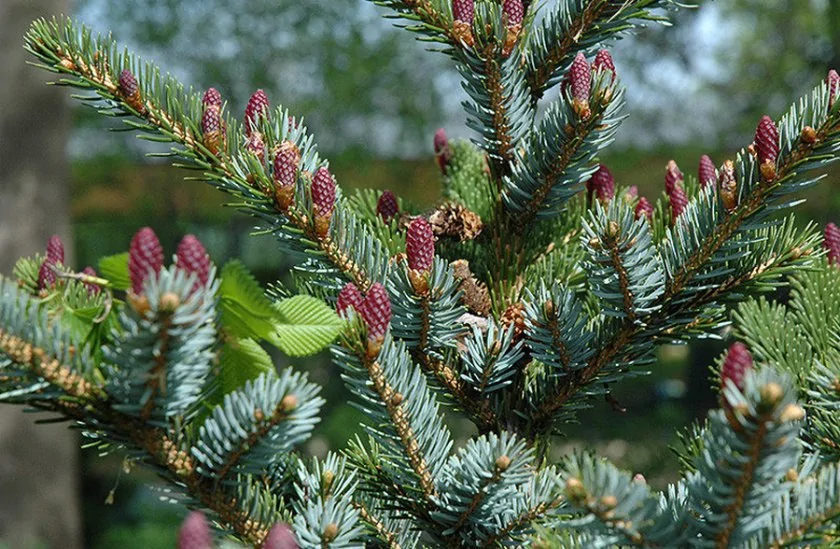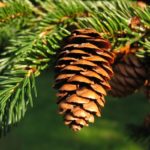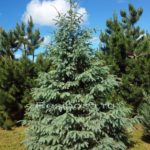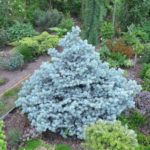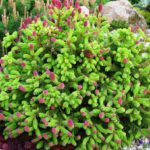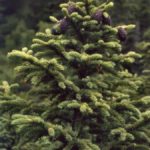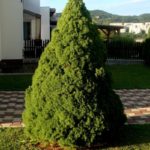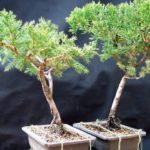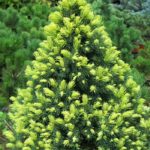Bicolor spruce is actively used to decorate garden and park areas. This culture has pronounced decorative properties. Thanks to this, it can be used as a tapeworm or in group plantings with other trees. Distinctive features of the culture are drooping branches and a cone-shaped crown. The average height of the plant is 3-5 meters. At the same time, the spruce grows by about 5-7 centimeters per year.
Description of appearance
Bicolor spruce Bicolor is a very beautiful spruce with unusual needles.This species was discovered in 1860 and was named after Rutherford Alcock. He was Queen Victoria's minister at the Yeddo Court, located in the Japanese capital, Tokyo.
This plant is characterized by a number of distinctive features. It has a conical crown with horizontal branches. In this case, the shoots have a light orange-brown tint. A mature tree is 3-5 meters in height. Moreover, its diameter reaches 1.5-2 meters. Over the course of a year, the crop grows by a maximum of 5-7 centimeters.
A distinctive feature of the culture is the spiral arrangement of needles. At the same time, the needles are turned forward from above. They have a length of 8-20 millimeters and a width of 1-1.5. The needles have a quadrangular shape in cross section. It is dark green above and blue-green below. There are white stomatal stripes on all sides of the needles. This is what is associated with the unusual shade of pine needles. Young growth has a rich green color and stands out against the background of darker old needles.
Spruce Bicolor needs sufficient sunlight. However, this tree can withstand light partial shade. As for the soil, the plant requires a fertile substrate with moderate humidity. The culture develops best in light loamy soil. It may have a slightly acidic or neutral reaction.
The plant is highly resistant to winter. It can be grown in zone 5.This means that the crop is able to withstand temperature drops from -23.3 to -28.8 degrees.
Distribution area
According to the description, this species was discovered in the highlands of Japan - in the central part of Honshu. The culture grows in Japan on the Pacific coast. It is found in the mountains in the Oi River valley. The plant is located at an altitude of 1.5-2 thousand meters above sea level - in the belt of subalpine forests. The culture prefers a cool climate with snowy winters. Most often, Bilokor spruce is found in mixed coniferous forests.
How to plant correctly
When planting crops, it is important to avoid soil compaction and stagnation of moisture. When choosing a place to grow spruce, you should give preference to areas with low groundwater levels. A high-quality drainage layer is of no small importance.
When planting fir trees in groups, the distance between them should be 2-3 meters. The hole for the plant should have a depth of 50-70 centimeters. In this case, it is important to ensure that the root collar is located at the same level with the surface of the earth.
In order for the spruce to develop better, it is necessary to prepare a special substrate. To do this, you need to mix leaf and turf soil, peat and sand. It is recommended to do this in a ratio of 2:2:1:1. After planting, the crop should be watered with 40-50 liters of water. It is also advisable to use fertilizer at this stage.
Aftercare
Spruce does not tolerate dry and hot weather well. Therefore, in summer it should be watered once a week. It is recommended to use 10-12 liters of water for 1 tree. Loosening the soil is of no small importance. However, it should be shallow - a maximum of 5 centimeters. This is due to the superficial location of the roots.
For the winter, it is worth sprinkling the tree trunk circle with peat.The thickness of this layer should be 5-6 centimeters. After winter, it is enough to mix the peat with the soil without removing it from the garden bed. You can feed the spruce a couple of times during the season. To do this, it is permissible to use special fertilizers for coniferous plants.
Bicolor spruce trees usually do not require pruning. However, when forming a hedge, trimming is acceptable. Most often, the crop is subjected to sanitary pruning. During this procedure, dry and diseased branches are removed. The manipulation should be performed from the end of May to the beginning of June. This is done after the end of active sap flow.
Application in landscape design
This spruce has pronounced decorative properties, which is why it is often used to decorate garden and park areas. The plant can be used as a tapeworm or create spectacular compositions with other trees.
Spruce Bicolor is a beautiful coniferous crop, which is often used to decorate summer cottages. In order for a plant to develop normally, it needs to be provided with complete and high-quality care.

